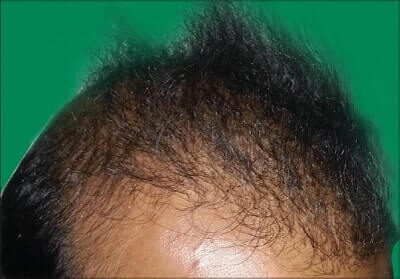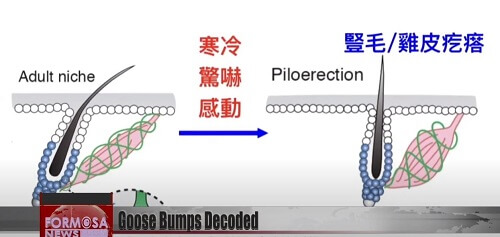I will update this post with more body hair transplant (BHT) megasession results as I get feedback. However, before you consider body hair transplants to the scalp, you need to be aware of their major limitations.
Body Hair Transplant Limitations
- The growth rate of transplanted body hair on the scalp is very unreliable. You should go in with the expectation that a lot of grafts will be wasted and never take.
- Other than beard hair, most body hair is far thinner than scalp hair.
- The cost of a body hair transplant procedure is significantly higher than the cost of a FUE or FUT hair transplant. The body hair extraction process is more labor intensive and is susceptible to higher transection rates.
- You can get some scarring in the body area from where the grafts are removed. Especially if the surgeon is inexperienced. Minor hyperpigmentation or hypopigmentation is always possible.
- The body hair may stand out from your scalp hair in terms of curliness, length and overall texture. The growth cycle of body hair also differs significantly from scalp hair.
Having said all the above, I have seen a large number of impressive body hair transplant before and after results over the years. I have long wanted to present a few successful megasession BHT cases, but delayed till now.
I was reminded of this subject when on a recent BTT show chat, a person named “Robert Hellner” proclaimed that he was delighted with his 6,500 graft BHT procedure. All of his grafts came from his beard.
Body Hair Type and Anagen Duration
Different types of body hair have different anagen growth phase duration. Healthy scalp hair has an anagen phase that lasts from 2-6 years. Most types of body hair have a significantly shorter duration anagen phase. The below table and image are from the following paper.
| Body Hair Type | Anagen Duration | Anagen Percentage | Telogen Duration |
| Scalp | 2-6 years | 85 | 3-4 months |
| Beard | 1 year | 70 | 10 weeks |
| Mustache | 16 weeks | 65 | 6 weeks |
| Trunk | 16 weeks | 30 | 12 weeks |
| Axillae | 16 weeks | 30 | 12 weeks |
| Pubic | 16 weeks | 30 | 12 weeks |
| Legs | 16 weeks | 20 | 24 weeks |

Background
I covered the subject of body hair transplants a few times in the early years of this blog. When BHT became popular around 15 years ago, I was very excited. Like a lot of balding men, I have an excessive amount of body hair. At one point, I even thought that this is almost a hair loss cure for many men with excessive body hair.
However, later on, it became evident that for a majority of people, the results were not always guaranteed. According to most surgeons, only beard hair and chest hair represent suitable donor zones for body hair.
Some surgeons such as Dr. John Cole only recommend beard hair as good and reliable enough to transplant in sizable quantity. At the other extreme, some surgeons go all out and use almost all types of body hair (including armpit, back, pubic and thigh hair). Perhaps hoping that at least a portion of it grows with some kind of regularity? There are nowadays 100s of surgeons who perform body hair transplants.
On a humorous note, did you know that Jeff Bezos’ grandfather grew his butt hair on his thumb after a skin graft procedure? And the transplanted butt hair kept growing till he died. It even had to be shaved off the thumb regularly.
If a patient with insufficient scalp donor hair wants to also use body hair, most surgeons combine the two types of hair during a hair transplant procedure. The body hair usually acts as a filler, and is never implanted in the front of the scalp.
Body Hair Transplant Megasessions
In this post, I will try to collect some before and after photos and videos of patients who received BHT megasessions of close to 10,000 grafts (or more). Note that there are between 90,000 to 150,000 hairs on a human head.
The number varies depending on hair color and genetics. The permanent donor region of the scalp only has around 12,500 hairs (6,000 folliclar units) that are transplantable. One human scalp hair follicular unit (graft) can contain 1, 2, 3 or 4 hair follicles, with 2 being the most common. Most body hair grafts contain just one follicle.
Dr. Arvind Poswal
The global leader in BHT hair transplant procedures is probably Dr. Arvind Poswal of India. He has been performing them for almost 20 years. I previously covered his vast body hair transplant experience. Also see his year 2007 thread on BHT on Hairsite.
Dr. Poswal benefits from India’s vast 1.4 billion population, which includes a lot of men with excessive body hair. A number of other Indian hair transplant surgeons have become body hair transplant experts in recent years.
The same cannot be said when it comes to similarly populous neighboring China, where body hair transplants are not as common. Chest hair and back hair is extremely rare in East Asian men, while beard hair is often minimal. However, do note that even amongst East Asian genotypes, there are rare exceptions.
On Hairsite’s archives, you can see 200 before and after results of Dr. Poswal’s patients covering the years 2004-2009. Around one-third of these include some body hair. On his own website, Dr. Poswal’s before and after photos and videos are even more extensive:
- Dr. Poswal’s patient photo gallery.
- Dr. Poswal’s patient video gallery.
In all of his large cases where body hair is moved, the hair transplant involves a combination of both scalp hair and body hair. This is the norm for all surgeons. Dr. Poswal recently told me that he has even done some rare 10,000 graft BHT procedures across several separate sessions. If he sends me photos of any such megasession body hair transplants, I will add them here.
You can check out Dr. A’s Hair Restoration YouTube channel for more recent results.
Impressive BHT Results of 5,000-10,000 Grafts
- An interesting 2013 case presentation from Dr. Venkataraman Mysore of India entailed 8,900 body hair grafts, of which none were beard hair. Moreover, the patient was 63 years old when he started, and he underwent 10 total BHT procedures! These included chest, abdomen, thigh, arm and back hairs in order of quantity.
- Eugenix Hair Sciences of India seems to have become a world leading clinic when it comes to performing body hair to head hair transplants. One of their recent patients got 8,000 beard hair grafts moved to the scalp. See one of their lead surgeon Dr. Arika Bansal’s video overview of BHT below:
- Perhaps the earliest documented case of a BHT patient was Australian FUE pioneer Dr. Ray Woods’ patient “Roman”. Between 1998 and 2000, he received: 2000 donor head hair; 1500 beard hair; and 4,500 chest plus abdomen plus back hair. For a net total of 8,000 single follicular units, of which 6,000 were body hair.
- Dr. Sanusi Umar of the US is among the world’s most experienced surgeons when it comes to BHT. On his YouTube channel, you can find cases going as far back as 2008, His latest body hair transplant cases involved over 6,000 grafts, including 4,500 from the beard. See his report from 2016 that analyzed 122 cases of body hair to scalp transplants that he performed from 2005-2011.
- In my post on US-based Dr. Jeffrey Epstein, I showed a video of a patient with 3,000 back hairs moved to the scalp. It is worth watching in its entirety. Unfortunately, Dr. Epstein has recently become a bit less optimistic about the success rate of body hair transplants.
